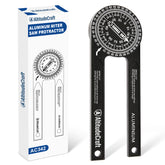How to Use a High-Quality Thread Gauge: Expert Guide for Accurate Measurements
How to Use a High-Quality Thread Gauge: Expert Guide for Accurate Measurements
When it comes to achieving precise measurements in mechanical and construction work, having a high-quality thread gauge is essential. These tools not only ensure the correct fit but also play a vital role in enhancing the longevity and safety of your projects. In this expert guide, we will explore the importance, features, and practical applications of using a thread gauge effectively.
1. Introduction to High-Quality Thread Gauges and Their Importance
Thread gauges are indispensable for anyone working with nuts, bolts, and threaded components. They help determine the pitch, diameter, and thread type, making it easier to select the appropriate fasteners for your projects. Understanding exactly what type of thread you’re dealing with can prevent costly errors and ensure your assemblies are secure.
2. Key Features of the Thread Checker (Durability, Precision, ANSI Standards)
- Durability: Made from high-quality materials, ensuring resistance to wear and tear.
- Precision: Features laser-etched scales for accurate measurements.
- ANSI Standards: Complies with American National Standards Institute regulations for enhanced reliability.
Each of these attributes contributes to the tool's effectiveness, allowing users to take precise measurements and avoid errors.
3. Step-by-Step Guide to Identifying Metric and Imperial Threads
Identifying the type of threads you are working with can be straightforward. Follow these steps:
- Step 1: Choose the right section of the gauge that corresponds to the thread being examined.
- Step 2: Align the gauge with the thread to check the fit. It should slide smoothly into the thread.
- Step 3: Read the markings on the gauge to determine whether it is a metric or imperial thread.
4. How to Read Laser-Etched Double Scales for Quick Sizing
Laser-etched double scales allow for faster identification. Here’s how you can read it:
- The top scale is typically for metric measurements (mm).
- The bottom scale is for imperial measurements (inches).
- Ensure the scale you are measuring against corresponds with the thread type specified on your project requirements.
This allows you to make quick decisions without needing calculations, enhancing workflow efficiency.
5. Tips for Maintaining and Storing Your Thread Gauge
To ensure longevity and accuracy, consider these maintenance tips:
- Keep it clean: Regularly wipe the gauge with a soft cloth.
- Store properly: Keep it in a protective case to avoid scratches.
- Avoid exposure: Keep it away from moisture or extreme temperatures.
By following these practices, your thread gauge will remain reliable and effective.
6. Practical Applications in Professional and DIY Projects
A high-quality thread gauge is invaluable in both professional settings and DIY projects:
- Automotive repairs: Ensures proper bolt replacement.
- Construction: Helps in choosing the correct sizes for wall mounts and fixtures.
- Home improvement: Ideal for furniture assembly and taking apart appliances.
7. Troubleshooting Common Thread Measurement Challenges
It’s not uncommon to run into issues while measuring threads. Consider these troubleshooting tips:
- Misalignment: Ensure that the gauge is properly aligned with the thread.
- Wear and tear: If measurements seem off, inspect the gauge for damage.
- Incorrect reading: Double-check if you’re interpreting the right scale.
8. Why AltitudeCraft’s Design Enhances Portability and Longevity
AltitudeCraft’s thread gauge stands out for its thoughtful design:
- Lightweight: Easy to carry to job sites.
- Compact: Fits easily in toolboxes without taking up much space.
- Robust construction: Designed for long-term use, ensuring you get value for your money.
FAQs
Purchase on Amazon
Ready to take your construction projects to the next level? Get your hands on our top-rated tools now by visiting our Amazon store.
Buy Now on Amazon

















Leave a comment
All blog comments are checked prior to publishing